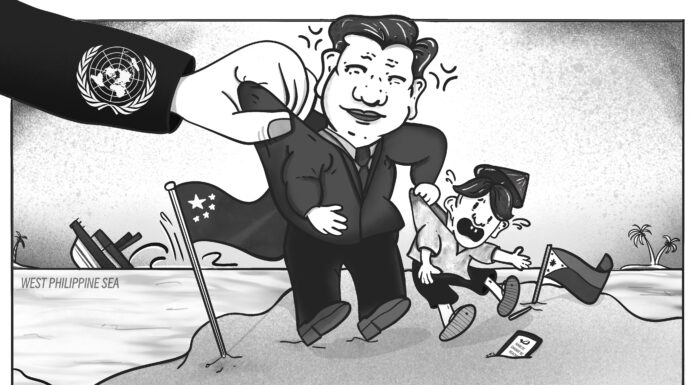CATCHING a bounty of fish was never a problem for the fishermen of Rapu-Rapu before. But after two cyanide spills in October last year, villagers now complain of longer fishing hours and pangs of hunger, as they struggle to find a living among the sea of dead fish that is the Albay Gulf.
Australian mining giant Lafayette Philippines Inc. (LPI) has been digging gold, copper, silver, and zinc in Rapu-Rapu, Albay since 1998 until Department of Environment and Natural Resources (DENR) accused the company of mine tailing and waste-water spill in 2005. DENR suspended LPI’s mining operations for seven months.
Last June 13, DENR Sec. Angelo Reyes granted LPI a 30-day grace period but required the company to pay P10.4 million in damage, cut its production capacity to 30 per cent, and undergo an intensive test-run to ensure leaks and spills would never happen again.
While Malacañang welcomed the decision and called it a “win-win solution,” Catholic bishops have expressed their disappointment saying that giving in to international companies’ interests would compromise the people’s right to the country’s resources and would endanger the life of residents.
In January 29, the Catholic Bishops Conference of the Philippines reaffirmed their stand against the Mining Act of 1995. While reiterating mining’s harmful environmental impact on nearby communities, the CBCP said the environmental losses outweighed the gains promised by the international mining corporations.
Lafayette probe
According to the DENR, LPI was responsible for the operational, technical and management failure that led to the October cyanide spills. The company was aware of these malfunctions but continued to operate nonetheless, its report says.
Due to heavy rains, LPI’s dam overflowed, prompting the mine operators to discharge five cubic meters of mine tailings with low levels of cyanide to the surrounding Albay Gulf, the report says. In October 11, LPI’s tailings pump malfunctioned and in October 31, the dam completely collapsed.
Residents of baranggays Binosawan, Pagcolbon and Malobago then complained of skin diseases and fish kills. As a result of low fish turn-out, six out of 10 Rapu-Rapu residents now barely eat three meals a day.
LPI was fined P10.7 million for the damages, but the company only paid P300,000. They filed a motion for reconsideration and refused to pay the rest of the fine until DENR investigations of the October spills were over. Last January, Malacañang formed the Rapu-Rapu Fact-Finding Commission (RRFFC), headed by Sorsogon Bishop Arturo Bastes, to investigate the Rapu-Rapu Polymetallic Project before permitting LPI to resume operations.
Earlier reports stated that RRFFC discovered LPI’s failure to inform nearby residents about mining’s negative effects like acid mine drainage. LPI also failed to complete the company’s reparation duties after the two spills, a violation of the administrative order from the DENR environmental compliance certificate.
“One of the great problems once Lafayette resumes mining operations will be acid mine drainage,” Bishop Bastes told the Varsitarian.
The RRFFC saw the possibility for an acid mine drainage, once sulfuric acid overflows from the company’s clay waste traps and contaminates the neighboring Albay Gulf and Lagonoy Gulf.
Last May 19, RRFFC recommended to the President the cancellation of LPI’s certificate, the closure of the Rapu-Rapu Polymetallic Project, and a review of the Mining Act of 1995.
But Bastes could not help but express his disappointment at the government for allegedly ignoring RRFFC’s recommendations.
“We’ve done our job. But despite that, I fear that the government will side with Lafayette,” Bastes said. “But the fight goes on.”
Lafayette said the RRFFCS’s findings were unscientific. It added RRFFC is biased against mining.
“Our report is absolutely scientific,” Baste said. “Lafayatte tries to discredit the findings because the truth about who they are and what they are doing is now exposed to the public. We had doctors, engineers and lawyers as commissioners and consultants. Our executive summary will prove our scholarly thrust.”
Despite disclaimers from both parties, LPI, under the DENR order, would undergo a five-day check-up for leaks of detoxification pipes, pump efficiency, and a nine-day test of LPI’s electro-mechanical system. A 15-day monitoring of the whole operational system concludes the test-run.
Should LPI meet the requirements, it can seek authorization for full operation and prove that it would not let another spill happen again. Camille G. Fallorina















